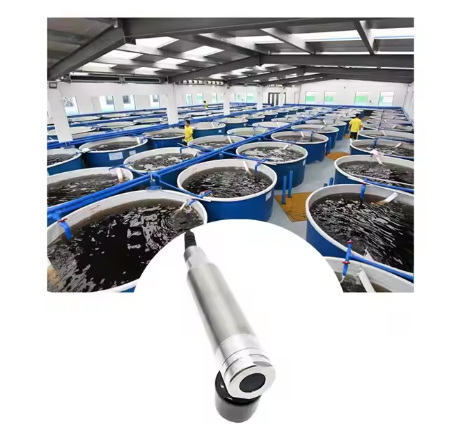Manaus, Brazil — The Amazon rainforest, a vital ecological treasure, is facing significant threats from water quality pollution primarily due to irresponsible mining and agricultural practices. This increasing hazard not only endangers the rich biodiversity of the region but also threatens the livelihoods of indigenous communities and local farmers who rely on clean water sources for their agriculture and daily needs. As awareness of these challenges rises, the demand for effective water quality monitoring has become more critical than ever.
The Impact of Mining and Agriculture
Illegal mining operations, particularly for gold, have proliferated in the Amazon basin, leading to severe environmental degradation. These activities often involve the use of toxic chemicals, such as mercury, which can contaminate nearby rivers and streams. According to environmental watchdogs, the pollution from mining not only disrupts aquatic ecosystems but also poses serious health risks to local populations that depend on these water sources for drinking and irrigation.
Agricultural practices in the Amazon, particularly the expansion of soybean farming and cattle ranching, further exacerbate the water quality issues. Fertilizers and pesticides used in these industries frequently wash into water bodies during rainfall, leading to nutrient runoff that can cause algal blooms. These blooms can deplete oxygen levels in the water, harming fish populations and other aquatic life.
The Importance of Water Quality Monitoring
In response to the alarming state of water resources in the Amazon, environmental agencies and local organizations are ramping up efforts to implement comprehensive water quality monitoring systems. These initiatives are crucial for several reasons:
-
Protecting Biodiversity: The Amazon rainforest is home to an unparalleled array of flora and fauna. Monitoring water quality helps protect aquatic habitats that support diverse species, many of which are endemic and at risk of extinction.
-
Supporting Sustainable Agriculture: Farmers in the Amazon rely on consistent access to clean water for irrigation. By monitoring water quality, stakeholders can identify contamination sources and address issues before they disrupt agricultural activities. Sustainable practices can be promoted based on the data collected, ensuring that farming does not come at the expense of the ecosystem.
-
Empowering Indigenous Communities: Indigenous peoples in the Amazon have traditionally managed the land sustainably, but their way of life is threatened by pollution and habitat destruction. Water quality monitoring initiatives that involve local communities ensure that their voices are heard, and their knowledge is incorporated into conservation efforts.
-
Informing Policy Decisions: Data from water quality monitoring can guide policymakers in creating effective environmental regulations aimed at reducing pollution from mining and agriculture. Stronger regulations combined with community engagement can lead to more sustainable land-use practices.
Advanced Monitoring Technologies
Among the innovative solutions being utilized in water quality monitoring are optical dissolved oxygen sensors. These sensors measure the concentration of dissolved oxygen in water, which is critical for the survival of aquatic life. By providing real-time data on oxygen levels, these sensors help identify areas affected by pollution, algal blooms, or other environmental stresses. Integrating optical dissolved oxygen sensors into the water quality monitoring framework can enhance the understanding of aquatic ecosystems and facilitate more effective responses to pollution incidents.
In addition to optical dissolved oxygen sensors, Honde Technology Co., Ltd. offers a variety of advanced water quality monitoring solutions, including:
- Handheld meter for multi-parameter water quality - for portable and immediate assessments of water quality parameters.
- Floating buoy system for multi-parameter water quality - designed for real-time monitoring in various water bodies.
- Automatic cleaning brush for multi-parameter water sensors - ensuring maintenance and accuracy of sensor data.
- Complete set of servers and software wireless module - supports RS485, GPRS, 4G, Wi-Fi, LoRa, and LoRaWAN for comprehensive data collection and analysis.
These solutions can significantly enhance the effectiveness of water quality monitoring efforts in the Amazon.
Various organizations, including local NGOs, governmental agencies, and international conservation groups, are partnering to enhance water quality monitoring in the Amazon. Technology such as satellite imagery, drones, and portable water testing kits is being utilized to gather real-time data on water quality across vast and often inaccessible areas of the rainforest.
Additionally, educational programs are being rolled out to raise awareness among farmers and mining operators about the long-term benefits of maintaining clean water sources and the potential consequences of pollution. Community workshops and training sessions aim to empower local populations with the knowledge and tools they need to monitor their water resources effectively.
Conclusion
As the Amazon rainforest continues to face mounting pressures from pollution and environmental degradation, the need for robust water quality monitoring has never been more urgent. Protecting this vital ecosystem requires a multi-faceted approach that combines technology, community involvement, and policy reform. By prioritizing water quality, Brazil can work toward a sustainable future where both the rainforest and its inhabitants thrive.
For more information about ongoing efforts and how to get involved in protecting the Amazon, organizations like the World Wildlife Fund (WWF) and local NGOs are actively seeking support and collaborations to further their missions. Additionally, for inquiries regarding advanced water sensor technology, please contact Honde Technology Co., Ltd. at info@hondetech.com or visit their website at www.hondetechco.com.
Post time: Mar-28-2025


